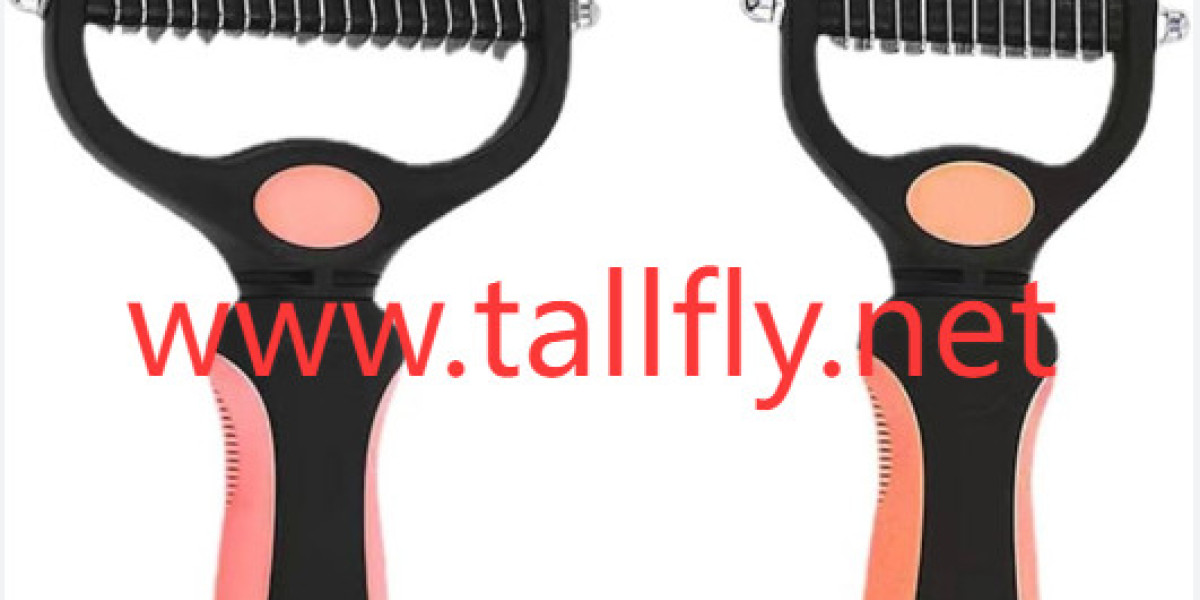Grooming habits at home have changed for many households in recent months and pets are getting more attention than ever. In that context the Pet Knot Untying Comb becomes a practical tool for owners who want to address tangles calmly and safely from day to day. This article explains where to use knot combs on thick coats and where to be extra gentle around delicate areas while connecting those choices to current grooming trends and common supply concerns.
Think about a coat in two layers. The dense under layer and the longer outer layer behave differently when tangles form. For broad thick areas such as the back the tail base and the belly a comb that lifts and separates dense fur helps loosen large tangles without dragging. Work methodically from the outside of a tangle toward the center using short motions to ease fibers apart. When a comb has wider spaced teeth it moves through dense fur with less resistance which reduces pulling and discomfort for the animal.
Delicate zones need a different approach. The face the inner legs and the area behind the ears have softer skin and shorter hair that can catch easily. In these zones swap to fine teeth or a pin style comb and hold the skin gently to avoid pinching. If a knot is close to the skin separate it into smaller sections by hand and comb each small section slowly. When a mat is too compact to loosen safely pause and consider trimming around it or seeking assistance from a trained groomer to avoid accidental injury.
A two step routine reduces stress and improves results. Start with a wider tooth tool to break up large tangles then follow with a finer comb to smooth and finish. Keep sessions short and positive. Use calm vocal cues and frequent breaks so the pet learns to accept grooming as a normal part of care. Many owners who have adopted regular at home grooming report fewer severe mats and a calmer routine overall when they follow this gradual approach.
Material and design matter for safety and cleaning. Choose a comb with rounded teeth to reduce skin scraping and an ergonomic handle to keep control during steady delicate motions. Metal components that can be rinsed and dried extend tool life while simple removable heads make cleaning hair and oils easier. For households with several animals keeping separate sets or cleaning between uses reduces the chance of transferring residues that might irritate sensitive skin.
Technique is equally important to tool choice. Work in small sections use light pressure and comb along the direction of hair growth in delicate areas. For thick regions lift the outer coat slightly and work the comb from top to bottom so the tool loosens knots without compressing them against the skin. If a knot resists and causes obvious discomfort it is safer to stop and reassess than to force removal. Clear simple instructions included with a grooming tool help owners feel confident about these steps and lower the risk of creating a negative grooming experience.
Current household patterns have encouraged more owners to try grooming at home and to look for tools that combine versatility with gentle handling. At the same time some procurement slowdowns have increased interest in tools that are simple to maintain and durable. For these reasons a comb that offers multiple tooth options in one tool and that is easy to clean matches common owner needs. Including compact guidance in packaging about where each side of a comb should be used helps new users adopt safe habits quickly.
Introducing a grooming plan for a pet is a behavior change for both parties. Start with short session times focused on non sensitive zones and reward calm behavior. Gradually introduce the tool to more sensitive areas once the pet shows relaxed responses. Regular light maintenance reduces the chance of stubborn mats forming and keeps skin healthier over time. Consistent care plus the right tool converts a chore into a bonding activity that benefits both the animal and the household routine.
If you are considering an untangling tool for regular home care look for a comb that balances lifting power for thick fur with fine teeth for finishing in delicate zones. Proper cleaning and simple step by step instructions make grooming less stressful. For direct product details and information about a comb that combines those features visit the product page at https://www.tallfly.net/product/knot-untying-comb/ This page includes images usage tips and care notes to help owners decide which version suits their grooming routine and pet needs.




